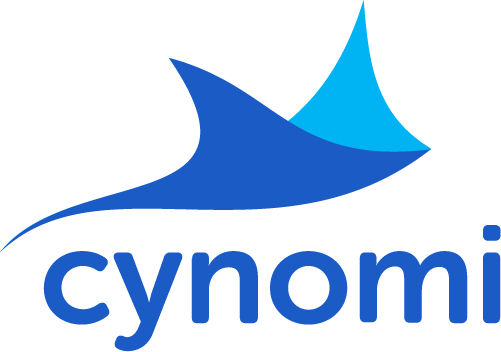REPORT: Core retention insights for ScaleUps to survive and thrive in 2024

Growth trends have changed significantly over the last 6-8 quarters due to major economic changes and global political instability. Despite the challenges, Insight portfolio companies have demonstrated remarkable resilience this year by turning crisis into opportunity.
Jump to the report » ScaleUp by the numbers: Post-Sales GTM Report
Resource limitations have brought different functions together with tighter collaboration across teams. The idea of aligning go-to-market strategies, once an abstract theoretical concept, has become a concrete and powerful unifying force. Customer churn is now viewed as a shared obstacle to overcome.
Deliver value or die
Paradoxically, there has never been a better time to be a customer. The economic squeeze has created a new set of frugal buyers who require ROI justification upfront, even for mission-critical purchases. Vendors that can’t deliver quick results and outcomes are no longer considered.
Transactional and opportunistic retention strategies reap what they sow. To prevent downsell and churn, companies need to deliver impact every step of the way. In today’s economy, karma matters. Value is the only currency accepted at renewal.
2024 is about nailing and scaling the fundamentals
It is reasonable to assume that investor risk appetite will remain modest for the foreseeable future, favoring Rule of 40 companies with stable retention, greater capital efficiency, strong unit economics, and healthy margins. 2024 is all about returning to core growth principles and nailing and scaling the fundamentals.
Insights from our Post-Sales GTM Report
To take the guesswork out of growth and guide our portfolio companies through this planning season, we are thrilled to announce the release of our 2023 ScaleUp by the Numbers: Post-Sales GTM Report, the only industry resource that offers founders, CEOs, and CXOs 15,000+ granular insights based on company ARR, GTM motion, ASP mix, and customer count. This report is derived from first-party data provided by our diverse portfolio of startups and ScaleUps.
Use this report to evaluate your company’s post-sales maturity and rethink your 2024 retention strategy. Find org design, efficiency, and performance trends related to onboarding and implementation, customer success and operations, customer education and marketing, account management, renewals, and more.
Core retention insights for 2024
Drawing from our analysis of strong retention performers across the Insight portfolio, we’ve compiled ten core retention tenets to embrace in the New Year.
-
Stop selling to customers that are going to churn and never pay CAC back.
Redirect your sales efforts towards prospects and existing customers whose pain points and needs you can truly solve – these customers are more likely to do business with you long term and bring in referrals.
-
Engineer value, not features.
If you want recurring revenue, create recurring value for your customers. Stop leading conversations with your prospects and customers around features. Instead, drive organic growth by aligning your GTM strategy and product roadmap around your customers’ desired outcomes and unmet business needs.
-
Create a single source of customer truth by reducing data gaps, siloes, and knowledge sprawl.
Customer intelligence and context live in too many places without a single institutional address. This makes it virtually impossible to generate an accurate view of the customer, effectively manage risk, and identify expansion opportunities. Data scalability and knowledge management are critical to driving innovation, company-wide productivity, and timely customer service.
-
Shift to a “harmonized engagement” model.
Harmonized engagement challenges the status quo. It calls for a unified, cross-functional approach where every department, team, and touchpoint is attuned to the customer’s frequency. Most customer operations and communications are managed in siloes. Marketing, Sales, Product, and Customer Success often follow disjointed approaches that cannibalize progress and result in poor communication and missed opportunities. This stalls growth.
-
Pay off your process debt to improve NRR and GRR efficiency.
Don’t make the mistake of assuming additional headcount and tech spend will enable you to scale; the opposite is often true. Without robust processes in place, adding new employees and systems can lead to amplified inefficiencies and diminishing productivity gains.
-
Don’t ignore GRR and logo retention.
Don’t sacrifice GRR and logo retention to increase NRR – you will miss opportunities to address root-cause issues and course-correct wrong turns. From an investor’s perspective, high GRR signals revenue predictability and product-market fit. Logo retention measures the stability of your overall customer base and potential for future expansion.
-
Make it easy for customers to do business with you and use your products.
Reduce customer effort – it shouldn’t take a PhD to understand how to buy, use, and pay for your products and services.
-
Earn the right to monetize your services, then monetize.
While every company will incur delivery costs to achieve strong growth and retention outcomes, there are strategic ways to offset those costs to protect your margins and scale your operations. Best-in-class software companies tier their offerings and charge for valuable services, generating incremental ARR that often neutralizes costs. For example, charging 30-40% of your customers for higher tiers of customer support can yield an incremental 6-8% in ARR.
-
Understand and monitor the unit economics of service delivery and retention.
Unit economics provide a holistic view of a company’s health and growth potential, allowing investors to project how profitable a company may be in the future before investing. With a clear view into the unit costs of delivery, ScaleUps can continuously improve their retention strategies, tweak their processes, and address challenges associated with serving low-margin customers. Low-margin customers are not typically worth acquiring, especially if they churn at a higher rate.
-
Ensure retention accountability is shared across departments with a joint focus on leading indicators.
To protect revenue, inform product strategy, and identify new logo and expansion opportunities, it’s critical that product, marketing, sales, and post-sales teams align on shared leading retention KPIs such as:
- Time-to-first-value
- Deployment length
- Onboarding and Support CSAT/CES
- User adoption
- Stakeholder engagement (breadth, depth, recency, & frequency)
- # verified outcomes last three months
- Time-to-first-upsell
- Product NPS
- # of implemented products
Get the full 2023 post-sales report
Instead of grieving the loss of pandemic-era growth and capital availability, ScaleUps can embrace the opportunities that lie ahead, especially with innovations like generative AI. By returning to core growth principles, teams can build stable and scalable businesses that not only survive economic headwinds but thrive in spite of them — creating a solid foundation for anything 2024 might bring.









